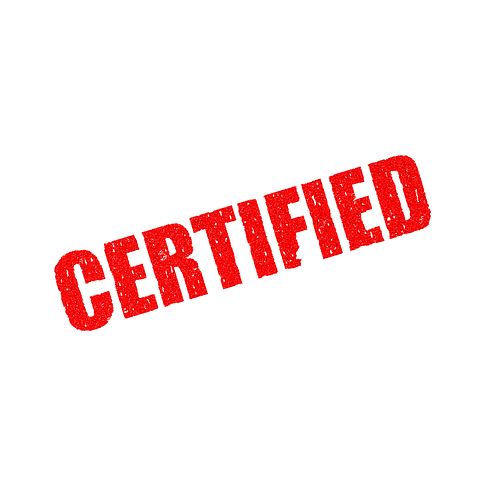Experts discuss how to prioritize medical and IVD devices under the new MDR/IVDR in Europe.

The new Medical Devices Regulation (MDR) and In Vitro Diagnostic Regulation (IVDR) approved by the European Union in May 2017 tightens requirements in an effort to create a more transparent and uniform process for certifying new medical and IVD devices, and recertifying existing ones. Manufacturers have three years and five years to comply with the MDR and IVDR respectively. Some of the challenging questions facing manufacturers are:
Is it cost-effective to recertify our entire product portfolio, when the investment for some may outweigh the benefit?
How will we expand our data collection resources and post-market surveillance/performance assessments required under the new laws?
What is the new role of Notified Bodies (NBs) and how will our relationship with them change?
Are any of our products Class III implantable devices or Class IIb active devices intended to administer and/or remove a medicinal product that may be required to undergo further scrutiny during the conformity assessment procedure?
What is the best timeframe to begin implementation, and how long will it take?
This article will outline a three-step approach to identifying your products with the highest commercial value, helping you prioritize your medical and IVD devices for compliance with the new MDR and IVDR.
Internal assessment
First, manufacturers need to inventory their entire pipeline and portfolio to determine the category for each product. At the same time, they need to note which devices have been newly classified as medical devices, such as disinfection and sterilization products, or up classified as Class III medical devices, such as surgical meshes and joint replacements. New additions to the IVDR are genetic tests and companion diagnostics that predict treatment response or individual patient reactions.
The investment will vary greatly among products, from a standard regulatory submission to the need for clinical trials with patient data. Ask yourself which ones are worth carrying forward, based on the difference between additional compliance costs and future revenue potential. Take into consideration that payers may prefer devices certified under the new rules. In some cases, it may be more cost effective to renew certain products under existing directives, then discontinue them when their certificates are voided in 2024. Review how you will meet the increased data collection and reporting requirements, such as post-market surveillance, under MDR and IVDR. Then create gap assessment and closure plans, with the future steps you will take to be in compliance with the new regulations.
External validation
Second, it’s important to interview customers to receive feedback on how your products are regarded in the marketplace. This process helps you validate internal hypotheses, especially for strategic drivers, and identify your portfolio’s contribution to company and brand value position. Further, you can assess the implications of removing different products from the portfolio from a business, regulatory, and compliance perspective. You’re then prepared to create a product priority list, with each device and diagnostic tool ranked by level of commercial importance.
Prioritization and implementation
Lastly, by integrating the findings from the internal and external work streams, you can prioritize your portfolio. By this stage, you’re equipped to make decision on which products to de-prioritize and potentially withdraw/sunset. During this third step you need to conduct financial calculations/simulations, including net present value (NPV), to understand the financial impact of your portfolio adjustments. You’ll need to assess resource requirements, including return on investment (ROI) for regulatory re-filing.
In terms of personnel, it’s useful to develop a roadmap for roles and responsibilities for activities and implementation planning. Under the new rules, you’ll need to appoint a “responsible person,” someone with the necessary credentials and training, to oversee that clinical evidence, quality data, and post-market surveillance are properly collected. That same person is responsible for making sure safety and performance issues are adequately addressed.
Be advised that NBs will now be in the role of regulatory enforcers, instead of industry partners. With the new rules, NBs are responsible for having sufficient, suitable qualified personnel and must be authorized to review specific classes and types of devices. We anticipate that there will be shortages of NBs to certify some types of devices, which could lead to delays and higher costs. Assess how the limited availability of NB services will affect your development and certification timelines, and lock in services in advance as needed.
Further, it is critical to develop a plan for the new regulatory documentation requirements, comparing them with what you’re already doing to discover any gaps and determine how to address them. Technical documentation for MDR and IVDR includes extensive requirements on what should be included in precertification and post-market surveillance reports, how often to file them, how they should be written, and who is responsible for them.
In addition, you’ll need to assess the resources you have to meet the new product labelling laws. There are significant changes to labelling, including simpler language and consistency across all languages on the label, as well as a requirement for implant cards to be given to patients who receive implantable devices. Further, Unique Device Identifiers (UDIs) must be included in labels and other documents to help trace medical devices for performance monitoring, safety alerts, or product recalls throughout the product’s lifecycle.
Smooth transition
To smoothly transition to the new MDR and IVDR as a successful player requires early intervention, forethought, and setting an action plan in motion. ICON and Simon-Kucher & Partners have teamed up to offer an integrated regulatory and commercial assessment of existing and pipeline medical devices and in vitro diagnostic devices. Jointly, we help our clients prepare the business case for which products to certify or recertify, based on revenue and profit, and which products should be withdrawn. We also help you create the substantial body of real-world evidence (RWE) required to conform to the new regulations. In addition, we help you save money in the long run through electronic health record-driven data collection and automated site management for ongoing product surveillance and performance assessment. Also, ICON’s medical device regulatory group can assist you in remediating technical documentation deficiencies by updating existing documentation or preparing new reports.
About the Author(s)
You May Also Like






